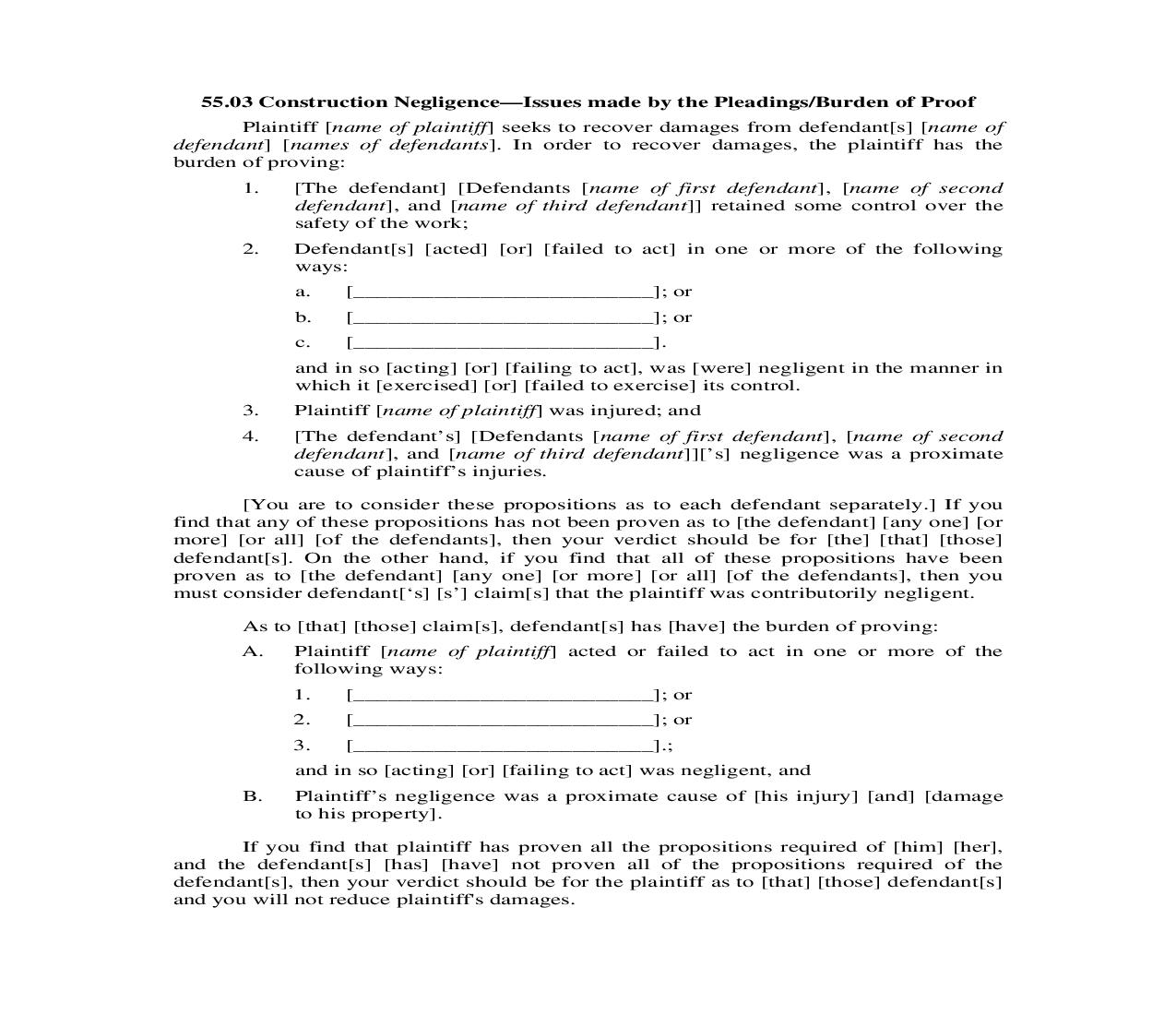
Last updated: 4/13/2015
55.03. Construction Negligence-Issues Made by the Pleadings-Burden of Proof
Start Your Free Trial $ 11.99What you get:
- Instant access to fillable Microsoft Word or PDF forms.
- Minimize the risk of using outdated forms and eliminate rejected fillings.
- Largest forms database in the USA with more than 80,000 federal, state and agency forms.
- Download, edit, auto-fill multiple forms at once in MS Word using our Forms Workflow Ribbon
- Trusted by 1,000s of Attorneys and Legal Professionals
Description
55.03 Construction Negligence--Issues made by the Pleadings/Burden of Proof Plaintiff [name of plaintiff] seeks to recover damages from defendant[s] [name of defendant] [names of defendants]. In order to recover damages, the plaintiff has the burden of proving: 1. [The defendant] [Defendants [name of first defendant], [name of second defendant], and [name of third defendant]] retained some control over the safety of the work; Defendant[s] [acted] [or] [failed to act] in one or more of the following ways: a. b. c. [__________________________]; or [__________________________]; or [__________________________]. 2. and in so [acting] [or] [failing to act], was [were] negligent in the manner in which it [exercised] [or] [failed to exercise] its control. 3. 4. Plaintiff [name of plaintiff] was injured; and [The defendant's] [Defendants [name of first defendant], [name of second defendant], and [name of third defendant]]['s] negligence was a proximate cause of plaintiff's injuries. [You are to consider these propositions as to each defendant separately.] If you find that any of these propositions has not been proven as to [the defendant] [any one] [or more] [or all] [of the defendants], then your verdict should be for [the] [that] [those] defendant[s]. On the other hand, if you find that all of these propositions have been proven as to [the defendant] [any one] [or more] [or all] [of the defendants], then you must consider defendant[`s] [s'] claim[s] that the plaintiff was contributorily negligent. As to [that] [those] claim[s], defendant[s] has [have] the burden of proving: A. Plaintiff [name of plaintiff] acted or failed to act in one or more of the following ways: 1. 2. 3. B. [__________________________]; or [__________________________]; or [__________________________].; and in so [acting] [or] [failing to act] was negligent, and Plaintiff's negligence was a proximate cause of [his injury] [and] [damage to his property]. If you find that plaintiff has proven all the propositions required of [him] [her], and the defendant[s] [has] [have] not proven all of the propositions required of the defendant[s], then your verdict should be for the plaintiff as to [that] [those] defendant[s] and you will not reduce plaintiff's damages. If you find that defendant[s] [has] [have] proven all of the propositions required of [that] [those] defendant[s], and if you find that the plaintiff's contributory negligence was greater than 50% of the total proximate cause of the injury or damage for which recovery is sought, then your verdict should be for [that] [those] defendant[s]. If you find that defendant[s] [has] [have] proven all of the propositions required of [that] [those] defendant[s], and if you find that the plaintiff's contributory negligence was less than 50% of the total proximate cause of the injury or damage for which recovery is sought, then your verdict should be for the plaintiff as to [that] [those] defendant[s] and you will reduce the plaintiff's damages in the manner stated to you in these instructions.







